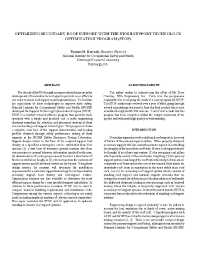Mining Publication: Optimizing Secondary Roof Support with the NIOSH Support Technology Optimization Program (STOP)
Keywords:
NOTE: This page is archived for historical purposes and is no longer being maintained or updated.
Contact NIOSH Mining if you need an accessible version.
Original creation date: August 2000
The decade of the 90's brought an unprecedented increase in the development of innovative technologies to provide more effective and easier to install roof support in underground mines. To facilitate the application of these technologies to improve mine safety, NIOSH developed the Support Technology Optimization Program (STOP).
Authors: TM Barczak
Conference Paper - August 2000
Proceedings of the 19th International Conference on Ground Control in Mining, Peng SS, Mark C, eds., Morgantown, WV: West Virginia University, August 8-10, 2000 Aug; :74-83
See Also
- Diagnosing and Controlling Moisture-Sensitive Roof in Coal Mines
- The Introduction of Roof Bolting to U.S. Underground Coal Mines (1948-1960): A Cautionary Tale
- Mistakes, Misconceptions, and Key Points Regarding Secondary Roof Support Systems
- Overview of Coal Mine Ground Control Issues in the Illinois Basin
- Performance Characteristics for Welded Wire Screen Used for Surface Control in Underground Coal Mines
- Preventing Falls of Ground in Coal Mines With Exceptionally Low-Strength Roof: Two Case Studies
- Preventing Injuries Caused by Unrecognized Stone Mine Roof Beam Failures With a Pro-Active Roof Control Plan
- Programmable Electronic Mining Systems: Best Practice Recommendations (In Nine Parts): Part 4: 3.0 Safety File
- Rock Falls
- Technique to Assess Hazards in Underground Stone Mines: the Roof Fall Risk Index (RFRI)
- Page last reviewed: 9/20/2012
- Page last updated: 9/20/2012
- Content source: National Institute for Occupational Safety and Health, Mining Program


 ShareCompartir
ShareCompartir
